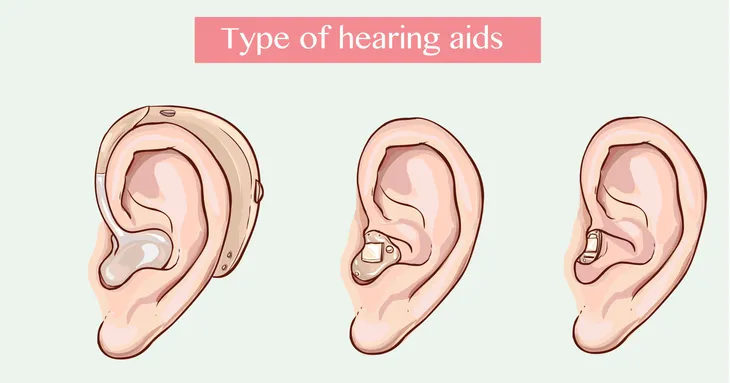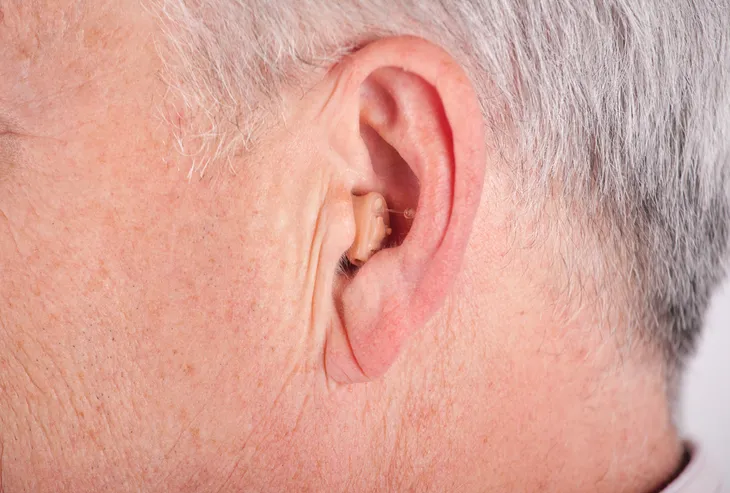Dealing with hearing loss can be a challenge and it can even interfere with your daily activities. About 48-million Americans suffer from some degree of hearing loss with most of them being older adults. Many people can benefit from using hearing aids but with so many different types available, how do you know which one is right for you?
In our complete guide to buying hearing aids, we explain the different types you can choose from. This will help you find the perfect hearing aid that is tailored to your degree of hearing loss and lifestyle. As a bonus, we’ll also explore shopping tips and features to consider when buying hearing aids. Let’s dive in!
Causes of Hearing Loss
Several factors can cause hearing loss. For starters, it may be caused by damage to the inner ear. Loud noises and aging can create wear and tear on the vital hairs and nerve cells in the cochlea. The cochlea sends sound signals to the brain and when the hairs or nerve cells are damaged or missing, this can cause hearing loss.
Further, hearing loss can also be caused by a gradual buildup of earwax, from an ear infection, a tumor, abnormal bone growth, or from a ruptured eardrum. Speak with your doctor if you believe you are experiencing hearing loss and if you experience sudden hearing loss (especially in one ear), seek medical attention immediately.
How Do Hearing Aids Work
Many people who suffer from hearing loss can benefit from hearing aids but how do they work? All hearing aids consist of the same basic components that carry sounds from your environment into your ear while also making them louder.
Hearing aids contain small microphones that collect sound. Then a computer chip and amplifier convert those sounds into digital code. Based on your hearing loss, the hearing aid analyzes the sound and converts amplified signals into sound waves which are then delivered into your ears through the speakers of the hearing aid.
Types of Hearing Aids
There are many different hearing aids on the market. All of which will vary in size, style, price, special features, and how it’s worn in your ear. To find the perfect hearing aid, you’ll want to choose one that suits your style, lifestyle preferences, budget, and needs. Let’s take a closer look at all the different types of hearing aids you can choose from.
Behind the Ear Hearing Aid
Behind-the-ear (BTE) hearing aids are suitable for almost anyone including any age and almost all types of hearing loss. A BTE typically hooks over the top of the ear and then rests behind the ear. It then has a tube that connects the hearing aid to an earmold that fits inside your ear canal.
It is traditionally known as the largest type of hearing aid but there are newer designs that are more streamlined making them less visible. It may also pick up more wind noise compared to other styles but it is capable of more amplification than other styles too. BTE hearing aids may also be available with a rechargeable battery.
Receiver in the Ear Hearing Aid
Another type of hearing aid is the receiver-in-the-ear (RITE) and receiver-in-canal (RIC) hearing aids. These types of hearing aids have a similar style to the BTE but instead of tubing, these types feature a tiny wire that connects the piece behind the ear to the receiver.
Some people prefer this style more as it’s less visible. It also features directional microphones, manual control options, and may come with a rechargeable battery. The one con of this hearing aid is that it is prone to earwax clogging the receiver.
Open Fit Hearing Aid
Open-fit hearing aids are like mini BTE hearing aids. They are designed to hide behind the ear and transmit sound into the ear canal through a thin plastic tube that connects to a tip that sits in the ear canal. This style of hearing aid keeps the ear canal open which allows for low-frequency sounds to enter naturally and allows high-frequency sounds to be amplified by the hearing aid.
This type of hearing aid is best for people with good low-frequency hearing and mild to moderate high-frequency hearing loss. The benefit of this style is that it doesn’t plug your ear like some other hearing aids which allow your own voice to sound better to you.
Completely in the Canal Hearing Aid
Completely-in-the-canal hearing aids are molded to fit perfectly inside your ear canal. This type of hearing aid is a good option for adults with mild to moderate hearing loss.
One benefit is that this is one of the smallest and least visible types of hearing aids. However, it is also susceptible to picking up wind noise, requires small batteries, and usually doesn’t include extra features like volume control or a directional microphone.
In the Canal Hearing Aid
In the Canal (ITC) hearing aids are custom made to mold to your ear. They fit partly in the ear canal which improves mild to moderate hearing loss for adults.
One benefit of this style is that it’s less visible in the ear compared to some larger hearing aid styles. It also has more features than the completely-in-the-canal hearing aid. However, due to its small size, it may be hard to adjust. One con to this style is that the speaker can become clogged with earwax.
Features to Consider When Buying a Hearing Aid
All hearing aids come with different features and some of these may improve your ability to hear in unique situations. Here are some features you should consider when buying a hearing aid:
- Noise reduction is available in all hearing aids but some will be better than others. Some even offer wind noise reduction.
- Directional microphones allow you to focus on sound in one direction and can help improve your ability to hear in environments with a lot of background noise.
- Telecoils make it easier to hear when talking on the phone. However, it needs to be used with a telecoil-compatible phone.
- Remote controls are great for adjusting features on your hearing aid without having to touch it. Some hearing aids can even be controlled wirelessly on a smartphone through an app.
- Variable programming allows your hearing aid to store pre-programmed settings for different environments.
- Synchronization is great for people with two hearing aids. This allows the hearing aids to be programmed to function together.
- Rechargeable batteries are a great feature because it makes maintenance easier for you.
Before You Buy
Before you buy a hearing aid you’ll want to speak with your doctor. First, they’ll need to rule out any other causes from your hearing loss such as infection. Next, you’ll want to have your hearing tested by a hearing specialist, known as an audiologist.
If you don’t know a reputable audiologist, ask your doctor for a referral. Not only can an audiologist test your hearing, but they can also help you choose the perfect hearing aid for your needs. They’ll also help adjust the device to tailor it to your needs.
Shopping Tips for Hearing Aids
When shopping for hearing aids there are some things you should consider. For starters, you’ll need to plan for the expense. The cost of hearing aids can vary greatly. Check out your insurance coverage to see if your hearing aids can be fully or partially covered.
Next, check for a warranty to make sure the hearing aids are covered for a specific period. You can even ask if the hearing aids come with a trial period. This way you can test them out to see if you like them.
To cut down on costs, only buy what you need. Extra features are nice but they can often add hundreds of dollars to the total bill.
It would also be wise to think about your future needs. Find out if the hearing aid is capable of increased power in case your hearing loss gets worse in the future. Finally, don’t be afraid to shop around to find an appropriate hearing aid that meets your needs and budget.














